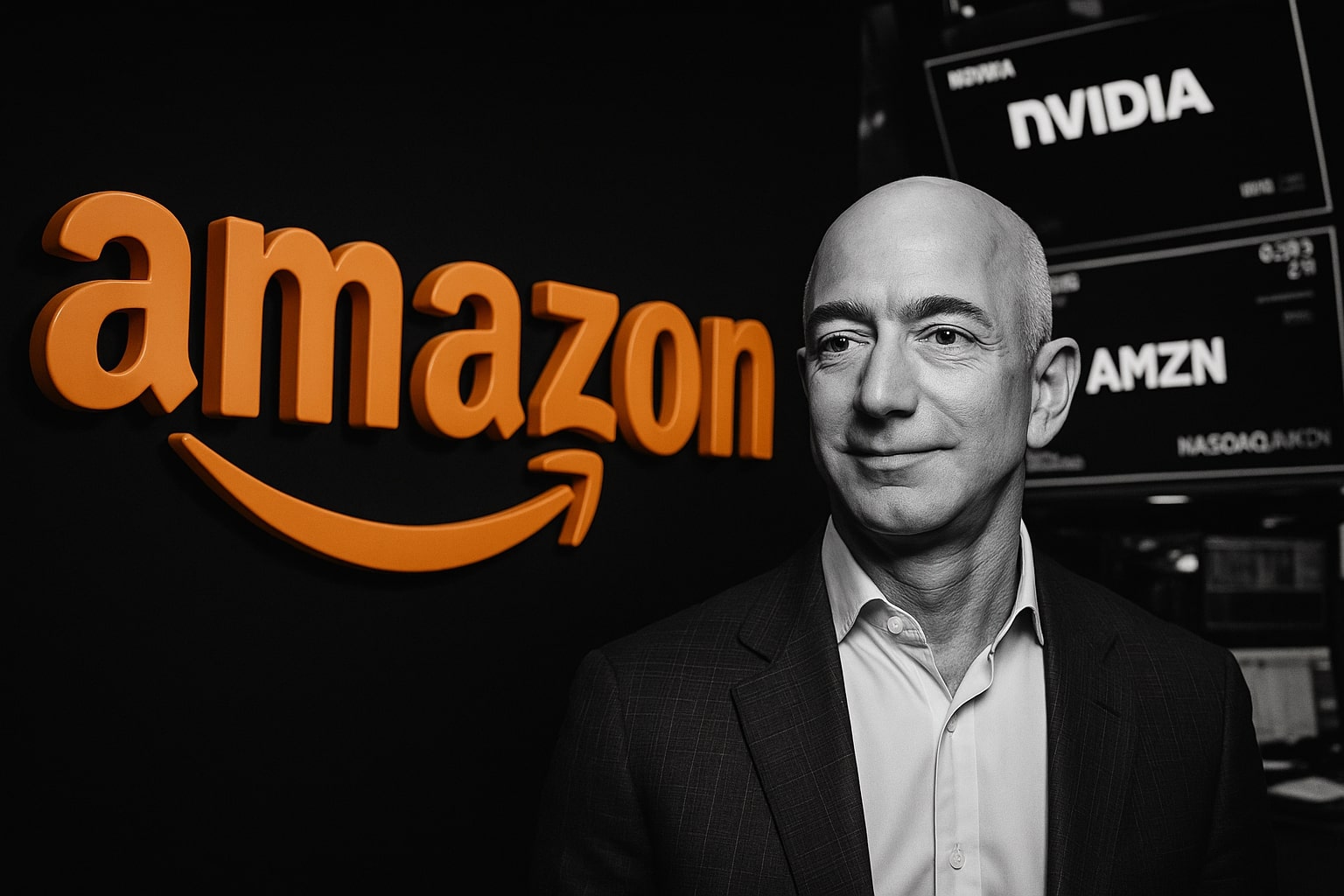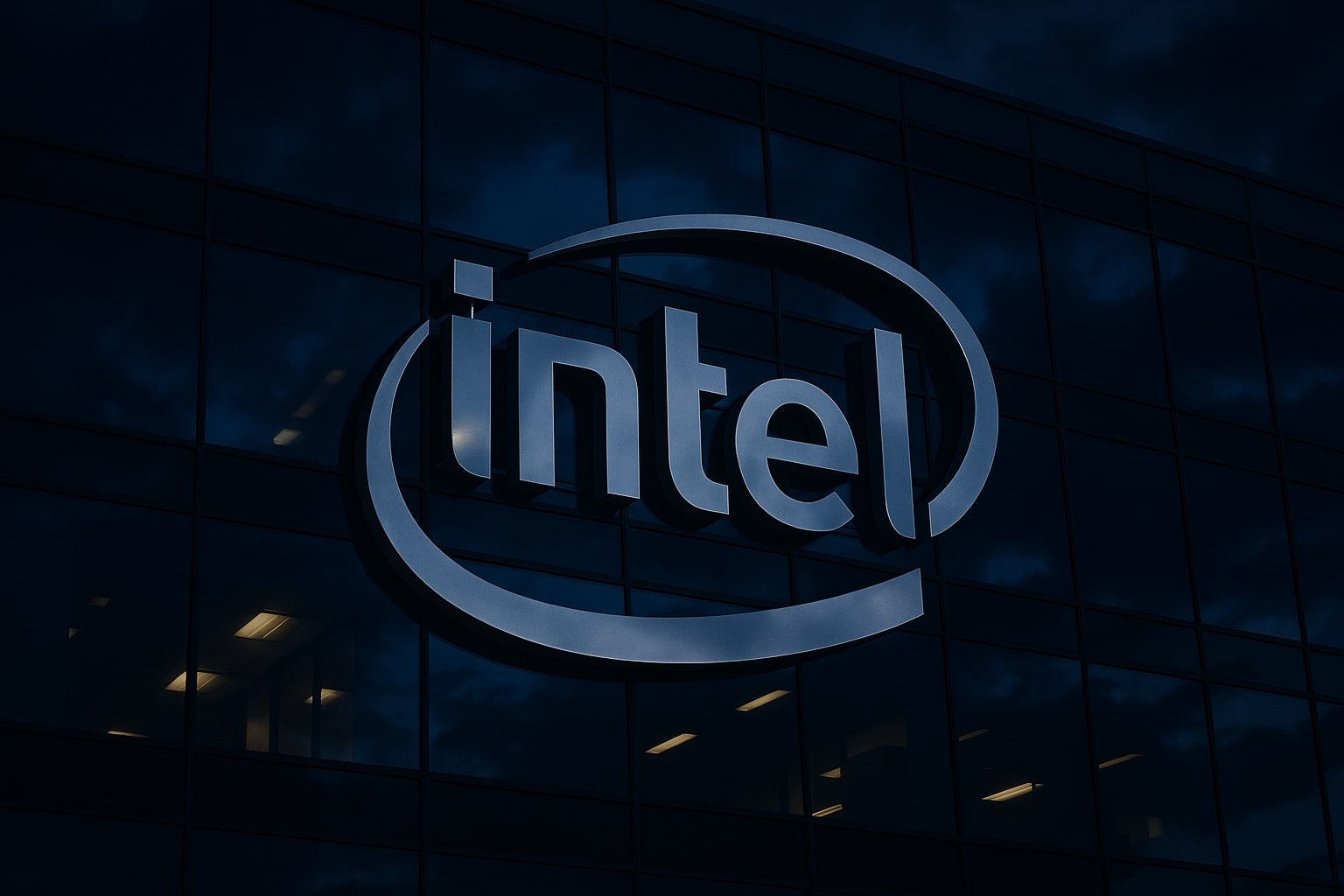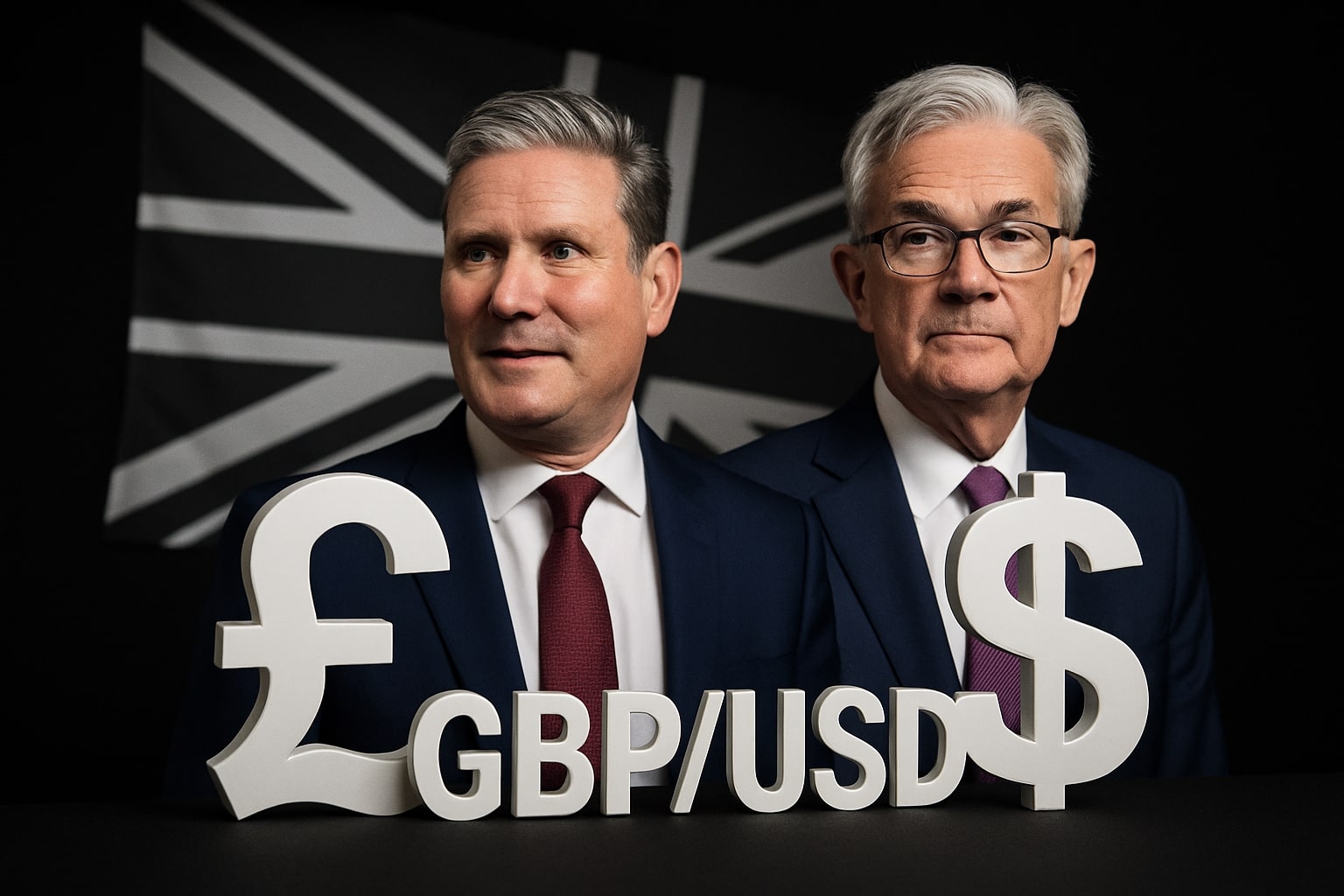NASDAQ:AMZN Dips Below $220 as Tariff Shock Collides with AI-Fueled Growth Momentum
Amazon.com Inc. (NASDAQ:AMZN) slipped sharply on Friday, losing 3.83% to $219.02, underperforming both the S&P 500 (-1.81%) and Nasdaq (-2.47%) amid renewed trade tension headlines. The decline erased nearly $85 billion in market capitalization, bringing Amazon’s total valuation to $2.336 trillion, even as analysts maintain that fundamentals remain intact. The stock traded within a volatile $217.61–$228.25 intraday range, reflecting short-term uncertainty but also clear institutional accumulation near the $215 support zone. Despite the drop, Amazon’s valuation metrics continue to anchor the long-term bullish case. The company’s trailing twelve-month revenue stands at $670.04 billion, with net income of $70.62 billion and profit margin of 10.54% — its strongest post-pandemic level. Amazon’s forward P/E of 28.57 and PEG ratio of 1.97 signal that the market is pricing in solid 2026 earnings expansion without speculative overreach.
AI Infrastructure Spending Compresses Free Cash Flow but Strengthens Future Margins
Amazon’s free cash flow dipped to $18.2 billion in Q2 2025, a steep 66% drop year-over-year from $53 billion, yet the contraction stems from deliberate, strategic AI reinvestment. The company’s balance sheet remains robust, holding $93.18 billion in cash and a debt-to-equity ratio of just 47.8%, giving management flexibility to continue its aggressive buildout of next-generation AWS infrastructure. Amazon Web Services remains the company’s primary growth engine, delivering $30.9 billion in quarterly revenue, up 17.5% year-over-year, and an annual run rate of $123.6 billion. AWS continues to outpace Microsoft Azure ($75 billion) and Google Cloud ($40.5 billion) by a wide margin. The expansion of in-house AI chip development — Trainium and Inferentia — reinforces AWS’s independence from external suppliers like NVIDIA and lowers future cost-per-inference. The company’s $8 billion cumulative investment in Anthropic further cements AWS as the computational backbone for emerging generative AI workloads across industries.
E-Commerce and Advertising Margins Drive a Stronger Operating Profile
Beyond the cloud narrative, Amazon’s core e-commerce engine remains unmatched in scale, generating $553.7 billion in combined North America and International revenue, which represents over 80% of total sales. Segment operating income climbed to $76.2 billion, a 40% annual increase, while net income rose 35% to $18.2 billion. Amazon’s North American operating margin expanded to 7.5%, improving by 190 basis points, and International margins climbed to 4.1%, up 320 basis points year-over-year. Advertising remains Amazon’s fastest-growing, highest-margin vertical — up 22% year-over-year and now accounting for roughly $30 billion in annual revenue, with estimated EBITDA margins near 50%. The company’s “full funnel” ad strategy, leveraging Prime Video sports streaming (NFL, NBA, NASCAR), has positioned Amazon as a serious competitor to traditional digital ad giants.
Earnings Beats and Double-Digit Revenue Growth Reinforce Confidence
Amazon has delivered four consecutive quarterly beats. In Q2 2025, EPS came in at $1.68, crushing the consensus estimate of $1.33 by 26.1%, while revenue hit $167.7 billion, surpassing forecasts by $10 billion. Analysts expect $1.55 EPS in Q3 on $177.5 billion revenue, and $1.84 EPS in Q4 as revenue scales to $207.9 billion. The consistent pattern of double-digit growth — 11.75% YoY for Q3 and 10.7% for Q4 — highlights the company’s durable demand base despite macro shocks. For FY2025, Wall Street expects $6.62 EPS, up from $5.53 a year ago, and projects $7.58 EPS in 2026, implying a 14.4% annual growth trajectory. Amazon’s earnings surprise rate over the past year averages 23.9%, underscoring the company’s conservative guidance approach and its ability to outperform expectations quarter after quarter.
Valuation Metrics Show Resilient Multiples and Healthy Premium
At 33.9x trailing earnings, Amazon trades at a valuation premium compared with the S&P 500’s 31.2x but still below Microsoft’s 38.3x, which is justified given Amazon’s broader diversification and margin expansion runway. Its price-to-sales ratio of 3.58x and EV/EBITDA of 16.79x suggest a moderate discount to its 5-year average of 20x, leaving headroom for multiple expansion. Return on equity stands at 24.77% and return on assets at 7.7%, both reflecting strong management efficiency. Among 60 analysts covering AMZN, the consensus 12-month price target averages $266.56, implying 21.7% upside, with Goldman Sachs leading at $275, while more cautious targets hover near $230. The company’s market cap of $2.34 trillion places it firmly in the top three global corporations, behind only Apple and Microsoft.
Tariff Tensions and Dollar Weakness Create Opposing Forces
Friday’s decline came on the heels of tariff escalation headlines, as President Trump warned of “massive” duties on Chinese goods. Over 50% of Amazon’s third-party sellers source from China, exposing the company to supply chain cost volatility. However, the 10% year-to-date decline in the U.S. Dollar Index (DXY 96.31) offsets some of these pressures, since foreign sales — exceeding $150 billion annually — translate into higher nominal earnings when repatriated into weaker dollars. With inflation moderating and U.S. yields dipping, the currency effect may continue to benefit Amazon’s international profit conversion through early 2026. In parallel, consumer demand remains stable across the U.S., Europe, and India, cushioning tariff impacts on core retail operations.
Insider and Institutional Confidence Remains Solid
Insiders currently hold 8.44% of total shares outstanding, and institutional investors own approximately 66.3%, signaling strong long-term conviction. Tracking recent insider moves through Amazon’s insider transaction portal shows a mix of routine executive sales and new incentive-based grants, typical of the company’s performance-linked compensation. Short interest remains low at 0.8% of float, and the short ratio of 1.68 confirms the absence of speculative downside pressure. The float of 9.64 billion shares provides deep liquidity for institutional rebalancing, supporting the stock’s resilience during broad market sell-offs.
AI Expansion Across Retail, Cloud, and Consumer Devices Strengthens the Thesis
Amazon’s AI strategy extends far beyond AWS. The rollout of Alexa+, equipped with generative intelligence, is designed to enhance user retention within Prime households and integrate advertising personalization. Meanwhile, Project Kuiper, Amazon’s low-orbit satellite network, targets global broadband coverage to over 200,000 underserved regions by 2027, linking new retail, data, and cloud monetization streams. The company’s partnership with Anthropic, worth $8 billion, ensures AWS’s continued dominance in training and deploying large language models. The introduction of in-house chips, including Trainium and Inferentia, directly reduces reliance on NVIDIA (NASDAQ:NVDA) and drives cost efficiency as model inference workloads scale globally. Each layer of this ecosystem — from chip design to satellite connectivity — reinforces Amazon’s vertical integration in AI infrastructure.
Financial Stability Anchored by Massive Liquidity and Conservative Leverage
Amazon’s $93.18 billion cash reserve, $159.57 billion in debt, and $121.14 billion in operating cash flow represent one of the strongest balance sheets in the global corporate landscape. The current ratio of 1.02 ensures short-term coverage, while the levered free cash flow of $31.02 billion provides flexibility for continued expansion without the need for external financing. Amazon’s reinvestment strategy — foregoing dividends to channel capital into logistics, robotics, and AI — remains a core driver of compounding EPS growth, which rose 59% year-over-year on a trailing basis. This capital discipline supports sustained shareholder value creation despite near-term free cash flow fluctuations.
Technical Structure Shows Near-Term Resistance but Long-Term Breakout Setup
Technically, Amazon remains above its major moving averages. The 50-day moving average sits at $226.01, marking the first resistance point, while the 200-day average at $214.52 defines key support. The 52-week high at $242.52 forms an upper resistance cap, and the 52-week low at $161.38 represents a deep retracement level unlikely to be revisited barring a macro shock. Volume remains heavy at 44.9 million shares, exceeding the 42.8 million 3-month average, confirming strong participation near the current levels. As long as AMZN maintains closes above $215, the technical bias remains bullish, targeting $266–$275 within 12 months and $325 by 2027 as free cash flow reaccelerates and macro headwinds stabilize.
Verdict: Strong Buy — Amazon’s Scale, Cash Power, and AI Integration Undervalued at $219
Despite headline-driven volatility, Amazon (NASDAQ:AMZN) remains a long-term leader trading at an unjustified discount. The company dominates cloud computing with AWS, scales advertising faster than peers, and maintains a fortress balance sheet with $93 billion in cash. Its 24.77% ROE, expanding 11.4% operating margin, and consistent 20% earnings growth projection support a compelling case for accumulation during weakness. With consensus targets pointing toward $266–$275, the current $219 price reflects a 20–25% undervaluation window. The trajectory of AI infrastructure integration, coupled with margin expansion in retail and ads, makes Amazon not only a defensive compounder but one of the most strategically positioned mega-cap stocks in the world.
Final Verdict: Strong Buy — Target $266 short-term, $325 long-term (2027).
That's TradingNEWS



















